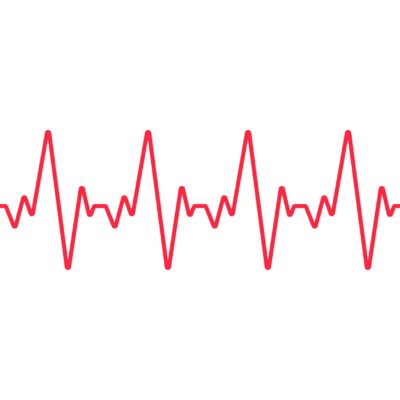
Anxiety “is defined by persistent, excessive worries that don’t go away even in the absence of a stressor,” according to the American Psychological Association (APA).
While anxiety is a mental health condition, it can create a variety of symptoms all throughout your body. It’s important to recognize the signs in case you are one of the people battling an anxiety disorder without fully realizing it.
When you’re suffering with anxiety
Anxiety comes in many forms. Common types of anxiety disorders include generalized anxiety disorder (GAD), social anxiety disorder, panic disorder, and phobias, according to the National Alliance on Mental Illness (NAMI).
Each type has distinctive set of symptoms, according to NAMI, “However, all anxiety disorders have one thing in common: persistent, excessive fear or worry in situations that are not threatening.”
The organization’s website describes some of the emotional symptoms of anxiety as:
- “Feelings of apprehension or dread
- Feeling tense or jumpy
- Restlessness or irritability
- Anticipating the worst and being watchful for signs of danger”
You could have physical symptoms too
While the emotional symptoms of anxiety can be significant and even disabling, anxiety can lead to physical problems that make it feel like there’s something “wrong” in your body. For some people, anxiety symptoms might even resemble an urgent medical condition, such as a heart attack.
Increased heart rate, in some cases leading to heart palpitations, is in fact a common symptom of anxiety, according to psychologist Sarah Allen, Ph.D., in PopSugar. She says the change in heart rate is related the body’s “fight-or-flight” instinct being triggered in inappropriate situations.
“In the short term, our heart rate and breathing increases, and adrenaline floods through our body to give us energy to fight or run away,” she says. “That is useful for dangerous situations, but typically we don’t face that sort of situation; our mind is just telling our body that our thought is dangerous, and so we find that this anxiety response is activated in inappropriate settings like traffic or during a stressful conversation.”
In addition to “pounding or racing heart and shortness of breath,” other common physical symptoms of anxiety, according to NAMI, include:
- “Sweating, tremors and twitches
- Headaches, fatigue and insomnia
- Upset stomach, frequent urination or diarrhea”
Negative self-talk
Anxiety could also start to negatively affect your inner monologue, or the way you talk to yourself. Some people caught in a cycle of anxiety could become “critical and self-shaming,” according to psychotherapist Leah Marone, LCSW, in an article she wrote for Psychology Today.
She says some people with anxiety might have thoughts similar to this:
“What is wrong with me?
Why can’t I get myself together?
This always happens.
I shouldn’t even be in this group.
Everyone thinks I’m so awkward.”
Feeling anxiety this way, often alongside other symptoms, is “incredibly common,” Marone writes.
Avoidance behaviors
Given the strong emotional and physical symptoms that people with anxiety disorders can feel, some may begin to avoid certain situations to protect their mental health.
“For many people battling anxiety, avoidance becomes the easiest way to cope. If public speaking causes their anxiety to skyrocket, it’s tempting to avoid any type of public speaking,” writes psychotherapist Amy Morin, LCSW, in Inc. Magazine.
Morin says, however, that over time avoidance behaviors can have consequences. “It can prevent someone from reaching their greatest potential and it can stand in the way of doing the things someone really wants to do.”
Sleep deprivation

“Sleep and psychiatric disorders, such as anxiety, often go hand in hand,” according to the Cleveland Clinic. “If you have an anxiety disorder, you may find it hard to fall asleep or stay asleep. Similarly, if you have a sleep disorder, you might feel anxious or fearful before bed because you’re afraid you won’t get the rest you need. One condition usually makes the other worse, so it can feel like a never-ending cycle.”
Mental health diagnosis
If you recognize some of these symptoms, it doesn’t mean you have an anxiety disorder. Only an experienced healthcare professional can diagnose you with anxiety.
When you go to a healthcare provider, be sure to share all your symptoms, when they occur and the frequency and intensity. Your doctor should perform a thorough evaluation of your medical and mental health to determine what may be causing your symptoms. It’s important to see a professional because they will look to see if your symptoms are caused by one disorder – or if you may be suffering from multiple disorders.
“It’s not uncommon for someone with an anxiety disorder to also suffer from depression or vice versa. Nearly one-half of those diagnosed with depression are also diagnosed with an anxiety disorder,” according to ADAA.
Gaining control
You don’t have to suffer with anxiety. Many options exist today to treat anxiety disorders, including cognitive behavioral therapy, anti-anxiety medications, and more, according to NAMI.
A conversation with a healthcare provider or mental health professional can help you understand your diagnosis, and eventually gain control over your symptoms.
For more information about this topic, please visit:
- How to identify an anxiety disorder – https://genesight.com/blog/patient/identifying-anxiety/
- Anxiety and aging – https://genesight.com/blog/patient/truth-about-anxiety-and-aging/
- Anxiety in the news – https://genesight.com/blog/patient/covid-anxiety-survey-finds-some-wont-seek-treatment/
Our articles are for informational purposes only and are reviewed by our Medical Information team, which includes PharmDs, MDs, and PhDs. Do not make any changes to your current medications or dosing without consulting your healthcare provider.
The GeneSight test must be ordered by and used only in consultation with a healthcare provider who can prescribe medications. As with all genetic tests, the GeneSight test results have limitations and do not constitute medical advice. The test results are designed to be just one part of a larger, complete patient assessment, which would include proper diagnosis and consideration of your medical history, other medications you may be taking, your family history, and other factors.
If you are a healthcare provider and interested in learning more about the GeneSight test, please contact us at 855.891.9415. If you are a patient, please talk with your doctor to see if the GeneSight test may be helpful.





